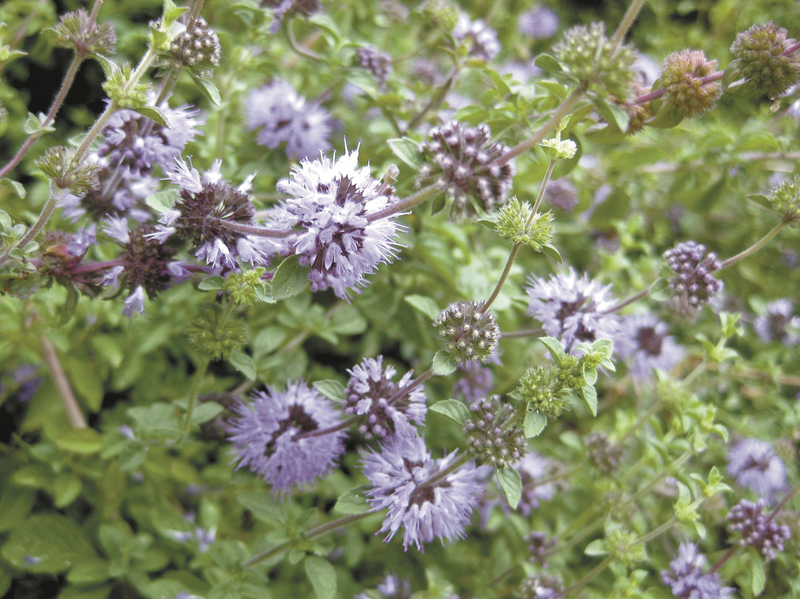As far back as 1768 the phrase “a pretty penny” meant a lot of money. As of 2013, it now costs the U.S. Mint 1.83 cents to mint and distribute each new penny. In 1792 things were quite different, and was a pennyworth so much that we had halfpenny coins. The Treasury wanted to mint pennies containing a penny’s worth of copper. That way it wouldn’t pay to counterfeit coins if you had to use a penny’s worth of copper to make a penny coin.
Putting a penny’s worth of copper into a coin would make the pennies huge, even larger than a half dollar.
So they made small pennies with a silver plug in the middle. The silver plus the copper added up to just about a penny’s worth of metal. The Silver Center Cent was the very first coin minted at the new Philadelphia Mint building in 1792.
Superb metallurgy wasn’t the only skill that Colonial Americans had. They learned to use plants of the woods and herbs brought from other lands to treat disease and aches.
Two such plants share a single name, the pennyroyals. European pennyroyal (Mentha pulegium) is a perennial native to Europe and Western Asia, while American pennyroyal (Hedeoma pulegioides) grows as an annual native to the eastern U.S. Both of these pennyroyals are low-growing, aromatic herbs used by colonists as insect repellents. One visible difference between the two is that European pennyroyal has four stamens, and American pennyroyal blossoms have just two stamens.
Of the two, the European pennyroyal, Mentha pulegium, seems the best. The crushed leaves have a heady fragrance similar to spearmint. It is a traditional culinary herb used to flavor wine in ancient Greece and later in kitchens of the Middle Ages.
While some use pennyroyal leaves in herbal teas, it is toxic to the liver, and can be fatal to infants and children - a good reason to avoid pennyroyal oil, often sold over the counter. Pennyroyal is best as an interesting garden plant and a natural insect repellent.
You can grow pennyroyal from seeds, cuttings or by dividing existing plants in the spring.
If you sow seeds, do not cover them, because the seeds need light to germinate.
Sow the seed in full sun or partial shade after all danger of frost has passed. Lightly mist the seedbed, being careful not to wash away the seeds. You should see seedlings in about two weeks.
You may need to divide pennyroyal plants every three or four years. Do this in early spring before the plants have begun growing.
If you are sowing the seeds indoors, gently sow them on top of the potting soil. Because they need light to germinate, be sure you do not cover the seeds. Place the planted flats or pots where they will get lots of light or use grow lights.
When the plants have at least two sets of true leaves you can transplant them into the outside garden. As the pennyroyal grows you can pinch the growing tips to encourage bushiness.
You can even use pennyroyal as a ground cover in poor soil.
To keep flies, gnats and mice away, colonists planted pennyroyal around their farms and homes. To use as an insect repellent, rub the leaves on your clothing rather than on your skin. Because of its strong oils always always wash your hands after working with pennyroyal.
So whatever became of those few rare 1792 silver center pennies? One 1792 silver center penny sold in 2012 for $1,150,000. Now that is a pretty penny.





















































